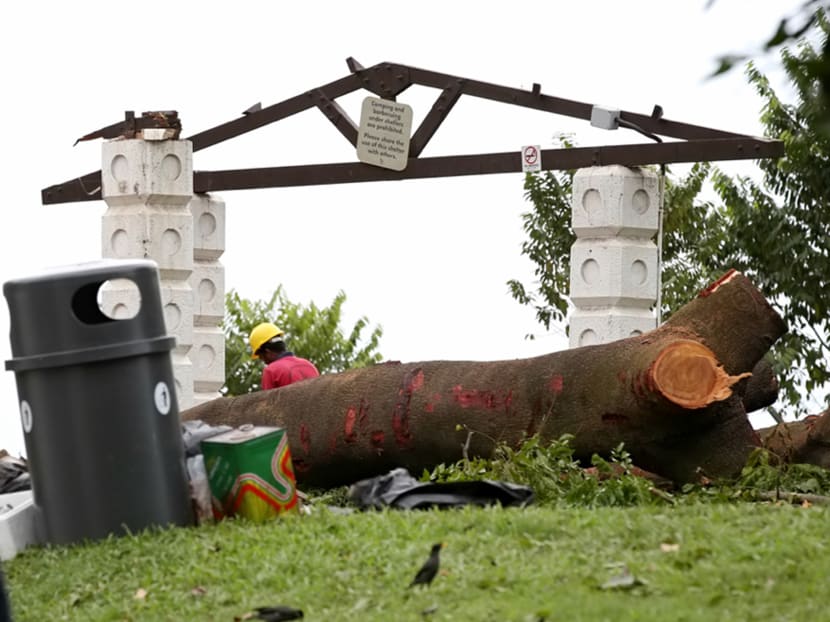Uprooted Sembawang Park tree that injured SMRT staff due for inspection in May 2019: NParks
SINGAPORE — The large tree that fell and injured 14 SMRT employees holding a Christmas party at Sembawang Park on Thursday evening (Dec 20) was due for inspection and pruning in May 2019, two years after it was last inspected.

The remnants of a pavilion struck by a falling tree in Sembawang Park on Dec 21. Workers seen clearing trunks and branches a day after two trees fell in the park injuring 14 people. Photo: Nuria Ling/TODAY
SINGAPORE — The large tree that fell and injured 14 SMRT employees holding a Christmas party at Sembawang Park on Thursday evening (Dec 20) was due for inspection and pruning in May 2019, two years after it was last inspected.
Giving an update on National Parks Board’s (NParks) investigation into the incident on Friday, its group director Chuah Hock Seong said the tree — a 21m mature Erythrophleum suaveolens with a girth of 3m — was last inspected in May 2017. It was assessed to be healthy then.
Mr Chuah said that the uprooted tree “appeared to have succumbed to heavy winds”, pointing out that the direction of its fall and its large size were consistent with that of another 18m tree that also uprooted and fell on Thursday.
“At the time of the incident, there was an intense thunderstorm with gusty winds in Sembawang Park,” he added.
NParks said that the area affected by the fallen 21m tree at Sembawang Park is still cordoned off to facilitate tree clearance works. The rest of the park remains open to visitors.
NParks typically inspects or prunes trees in frequencies ranging between 12 and 24 months, which is “more stringent” than the International Society of Arboriculture’s recommendations, Mr Chuah said. The maintenance regime differs based on the tree’s location, species, age and condition.
Apart from the inspections, Mr Chuah said that NParks officers also carry out regular checks when they do their routine rounds of Singapore’s streetscapes and parks, and that these are “intensified” during periods of adverse weather conditions.
That is how they pick out trees for tree pruning and crown reduction or more detailed inspection, he said, adding that damaged trees would also be identified following any storm event.
With such a regime, which has been in place since the early 2000s, Mr Chuah said that the number of tree incidents here has dropped by about 85 per cent, from 3,000 in 2001 to about 400 as of December this year “despite more intensive rain and stormy weather”. These incidents mostly involved snapped tree branches.
In a continued effort to improve its maintenance regime, NParks is developing modelling tools to better understand the behaviour of trees under varying environment conditions, he added.








